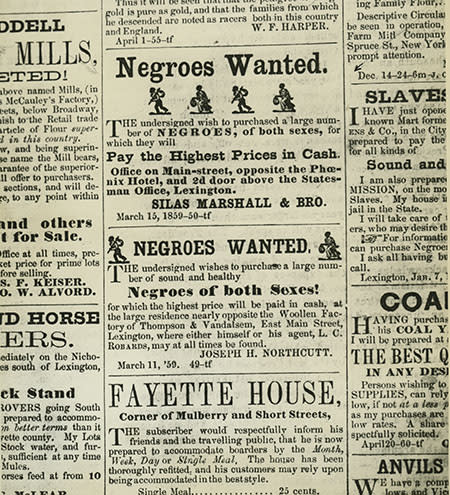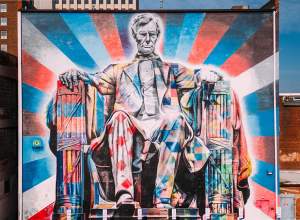Sign #7 102 W. Short Street
Over the centuries, Lexington has been a political, social, and economic reflection of the Bluegrass State. Ties to slavery have been no exception. As an early metropolitan center, Lexington was a trading hub for all forms of exports, including human beings. Slaves on surrounding farms and within the city were sold and purchased in Lexington’s markets. Slave trading was given no little more regard than a business transaction, despite the thoughts and emotions of those traded. Until the mid-1840’s, Lexington was primarily involved in the local slave commerce. Kentucky’s 1833 Slave Non-Importation Law prevented the movement of enslaved individuals into the state for purposes other than permanent relocation. This law, although nearly impossible to enforce, was supported by slave owners to prevent market saturation and ensured that the value of their slave property was maintained. With growing labor demands in the south, the law was repealed in 1849, and Lexington moved into interstate slave trading.

The slave trade was profitable to more than just slave owners. Motivated by financial gains, bands of men formed slave patrols that captured runaway slaves and re-enslaved free African-Americans who had the misfortune of crossing their paths. Slave jailers in Lexington served as market middlemen for these patrollers and other slave owners. With squalid conditions, slave jails were used to hold African-Americans awaiting auction, or for transportation to southern markets. Lexington had several well-established slave jails downtown. Directories listed Robards’ Slave Jail, Megowan’s Slave Jail, and Pullum’s Slave Jail as among the city’s most profitable businesses, and newspapers ran their advertisements for auctions and adds for purchasing without hesitation.
















